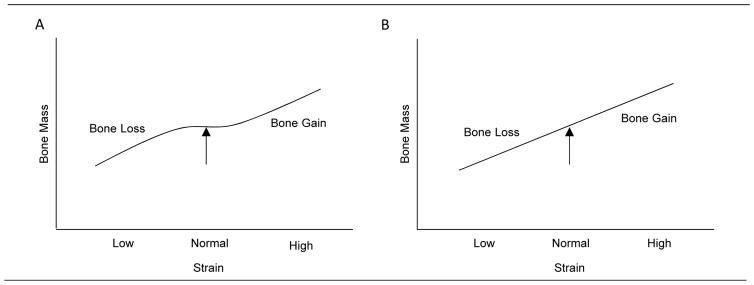Figure 1.
The mechanostat is hypothesized as a mechanism that regulates bone mass in response to changes in mechanical strain. As originally envisioned (A), strain levels consistently falling below the lower boundary lead to an adaptive response where bone is lost, increasing strain. Strain levels consistently exceeding the upper boundary lead to an adaptive response where bone is gained, decreasing strain. Based on this model there is a zone between upper and lower boundaries where strain differences do not evoke an adaptive response (Frost 1987). An alternative model has been proposed (B) where strain levels below or above a set point that is bone specific evokes an adaptive response (Skerry 2006). While some studies suggest that moderate weight changes need not evoke an adaptive response (see text) other findings are consistent with the alternative model (see Figure 2).

